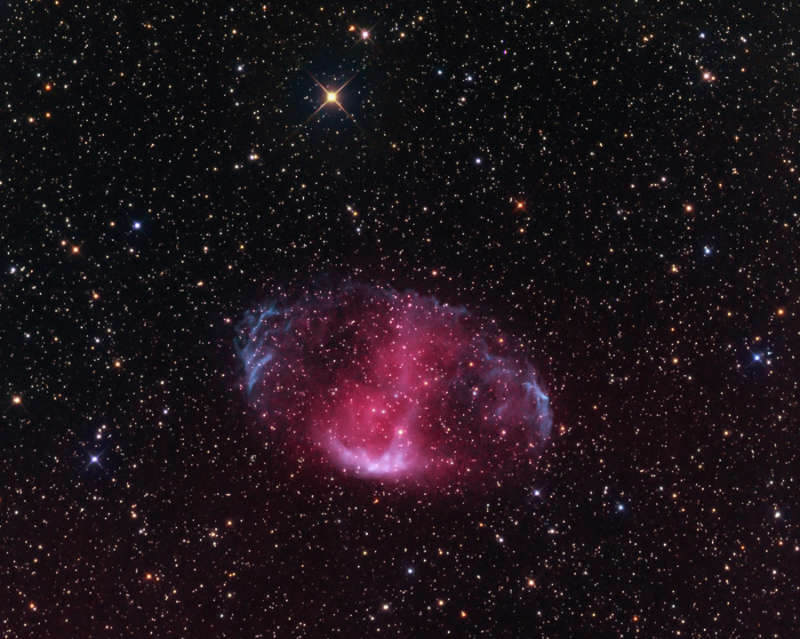
|
Credit & Copyright: Don Goldman
Explanation:
The lovely, symmetric planetary nebula
cataloged as MWP1 lies some
4,500 light-years away in the northern constellation
Cygnus the Swan.
One of the largest
planetary nebulae
known, it spans about 15
light-years.
Based on its expansion rate
the nebula has an age of 150 thousand years,
a cosmic blink of an eye
in the 10 billion year life of a sun-like star.
But planetary nebulae represent a very brief final phase in
in stellar
evolution, as the nebula's central star shrugs off
its outer layers to become a hot white dwarf.
In fact, planetary nebulae ordinarily only last
for 10 to 20 thousand years.
As a result, truly
ancient MWP1
offers a beautiful
challenge to astronomers studying the evolution of its central star.
|
January February March April May June July August September October November December |
| ||||||||||||||||||||||||||||||||||||||||||||||||
NASA Web Site Statements, Warnings, and Disclaimers
NASA Official: Jay Norris. Specific rights apply.
A service of: LHEA at NASA / GSFC
& Michigan Tech. U.
Based on Astronomy Picture
Of the Day
Publications with keywords: planetary nebula - stellar evolution
Publications with words: planetary nebula - stellar evolution
See also:
- APOD: 2025 August 31 Á NGC 7027: The Pillow Planetary Nebula
- APOD: 2025 August 22 Á A Tale of Two Nebulae
- APOD: 2025 August 5 Á NGC 6072: A Complex Planetary Nebula from Webb
- APOD: 2025 July 29 Á A Helix Nebula Deep Field
- APOD: 2025 July 13 Á Planetary Nebula Mz3: The Ant Nebula
- APOD: 2025 June 9 Á Between Scylla and Charybdis: A Double Cosmic Discovery
- APOD: 2025 May 14 Á NGC 1360: The Robins Egg Nebula
